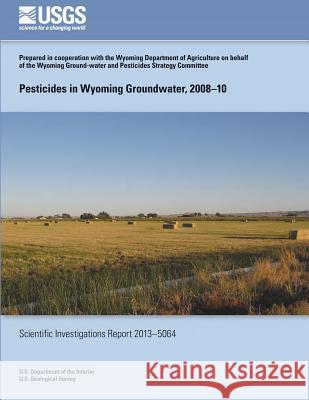Pesticides in Wyoming Groundwater, 2008?10 » książka
Pesticides in Wyoming Groundwater, 2008?10
ISBN-13: 9781500275426 / Angielski / Miękka / 2014 / 52 str.
Groundwater samples were collected from 296 wells during 1995-2006 as part of a baseline study of pesticides in Wyoming groundwater. In 2009, a previous report summarized the results of the baseline sampling and the statistical evaluation of the occurrence of pesticides in relation to selected natural and anthropogenic (human-related) characteristics. During 2008-10, the U.S. Geological Survey, in cooperation with the Wyoming Department of Agriculture, resampled a subset (52) of the 296 wells sampled during 1995-2006 baseline study in order to compare detected compounds and respective concentrations between the two sampling periods and to evaluate the detections of new compounds. The 52 wells were distributed similarly to sites used in the 1995-2006 baseline study with respect to geographic area and land use within the geographic area of interest. Because of the use of different types of reporting levels and variability in reporting-level values during both the 1995-2006 baseline study and the 2008-10 resampling study, analytical results received from the laboratory were recensored. Two levels of recensoring were used to compare pesticides-a compound-specific assessment level (CSAL) that differed by compound and a common assessment level (CAL) of 0.07 microgram per liter. The recensoring techniques and values used for both studies, with the exception of the pesticide 2,4-D methyl ester, were the same. Twenty-eight different pesticides were detected in samples from the 52 wells during the 2008-10 resampling study. Pesticide concentrations were compared with several U.S. Environmental Protection Agency drinking-water standards or health advisories for finished (treated) water established under the Safe Drinking Water Act. All detected pesticides were measured at concentrations smaller than U.S. Environmental Protection Agency drinking-water standards or health advisories where applicable (many pesticides did not have standards or advisories).
Zawartość książki może nie spełniać oczekiwań – reklamacje nie obejmują treści, która mogła nie być redakcyjnie ani merytorycznie opracowana.











